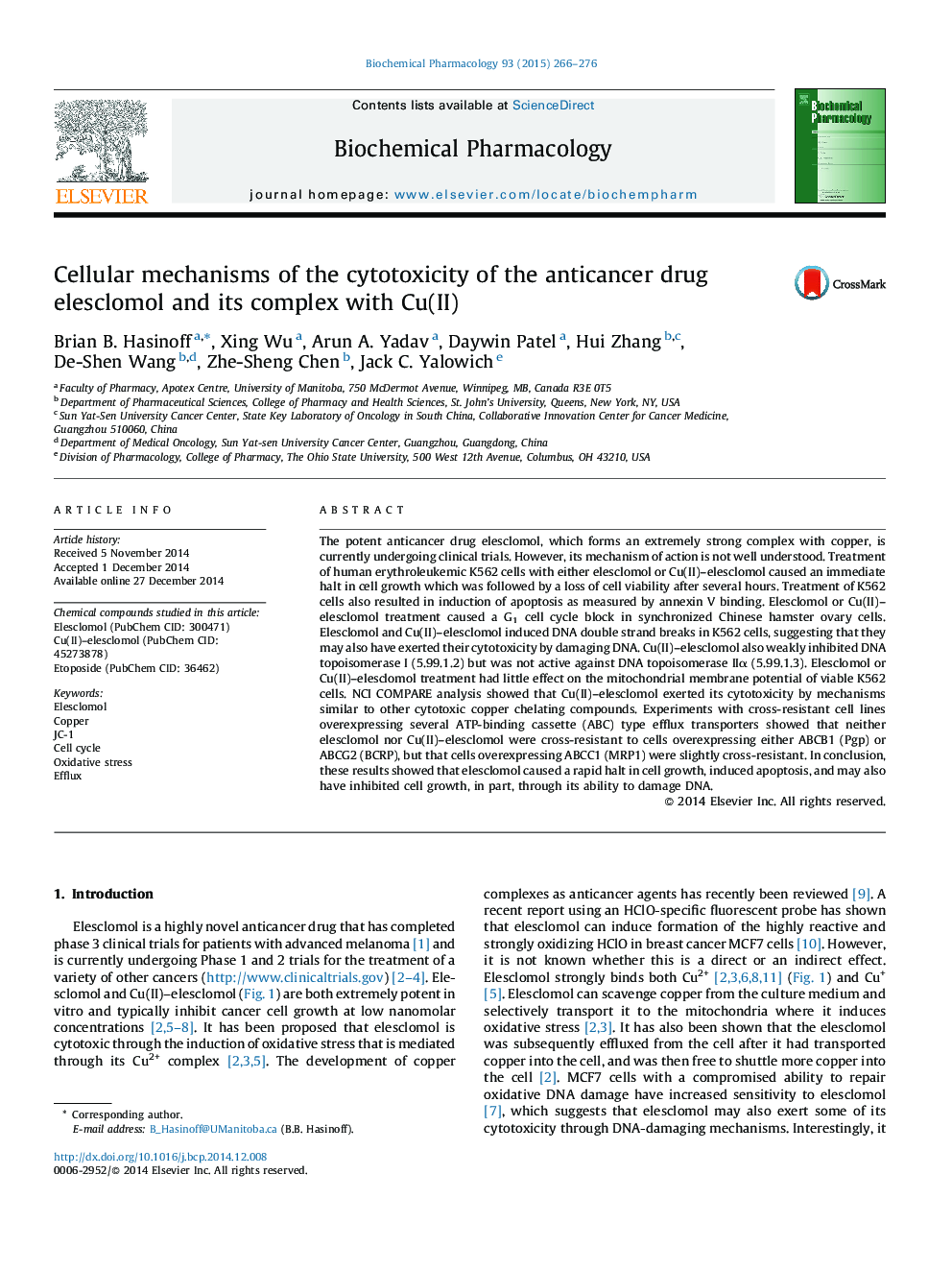| Article ID | Journal | Published Year | Pages | File Type |
|---|---|---|---|---|
| 5823319 | Biochemical Pharmacology | 2015 | 11 Pages |
The potent anticancer drug elesclomol, which forms an extremely strong complex with copper, is currently undergoing clinical trials. However, its mechanism of action is not well understood. Treatment of human erythroleukemic K562 cells with either elesclomol or Cu(II)-elesclomol caused an immediate halt in cell growth which was followed by a loss of cell viability after several hours. Treatment of K562 cells also resulted in induction of apoptosis as measured by annexin V binding. Elesclomol or Cu(II)-elesclomol treatment caused a G1 cell cycle block in synchronized Chinese hamster ovary cells. Elesclomol and Cu(II)-elesclomol induced DNA double strand breaks in K562 cells, suggesting that they may also have exerted their cytotoxicity by damaging DNA. Cu(II)-elesclomol also weakly inhibited DNA topoisomerase I (5.99.1.2) but was not active against DNA topoisomerase IIα (5.99.1.3). Elesclomol or Cu(II)-elesclomol treatment had little effect on the mitochondrial membrane potential of viable K562 cells. NCI COMPARE analysis showed that Cu(II)-elesclomol exerted its cytotoxicity by mechanisms similar to other cytotoxic copper chelating compounds. Experiments with cross-resistant cell lines overexpressing several ATP-binding cassette (ABC) type efflux transporters showed that neither elesclomol nor Cu(II)-elesclomol were cross-resistant to cells overexpressing either ABCB1 (Pgp) or ABCG2 (BCRP), but that cells overexpressing ABCC1 (MRP1) were slightly cross-resistant. In conclusion, these results showed that elesclomol caused a rapid halt in cell growth, induced apoptosis, and may also have inhibited cell growth, in part, through its ability to damage DNA.
Graphical abstractDownload full-size image
